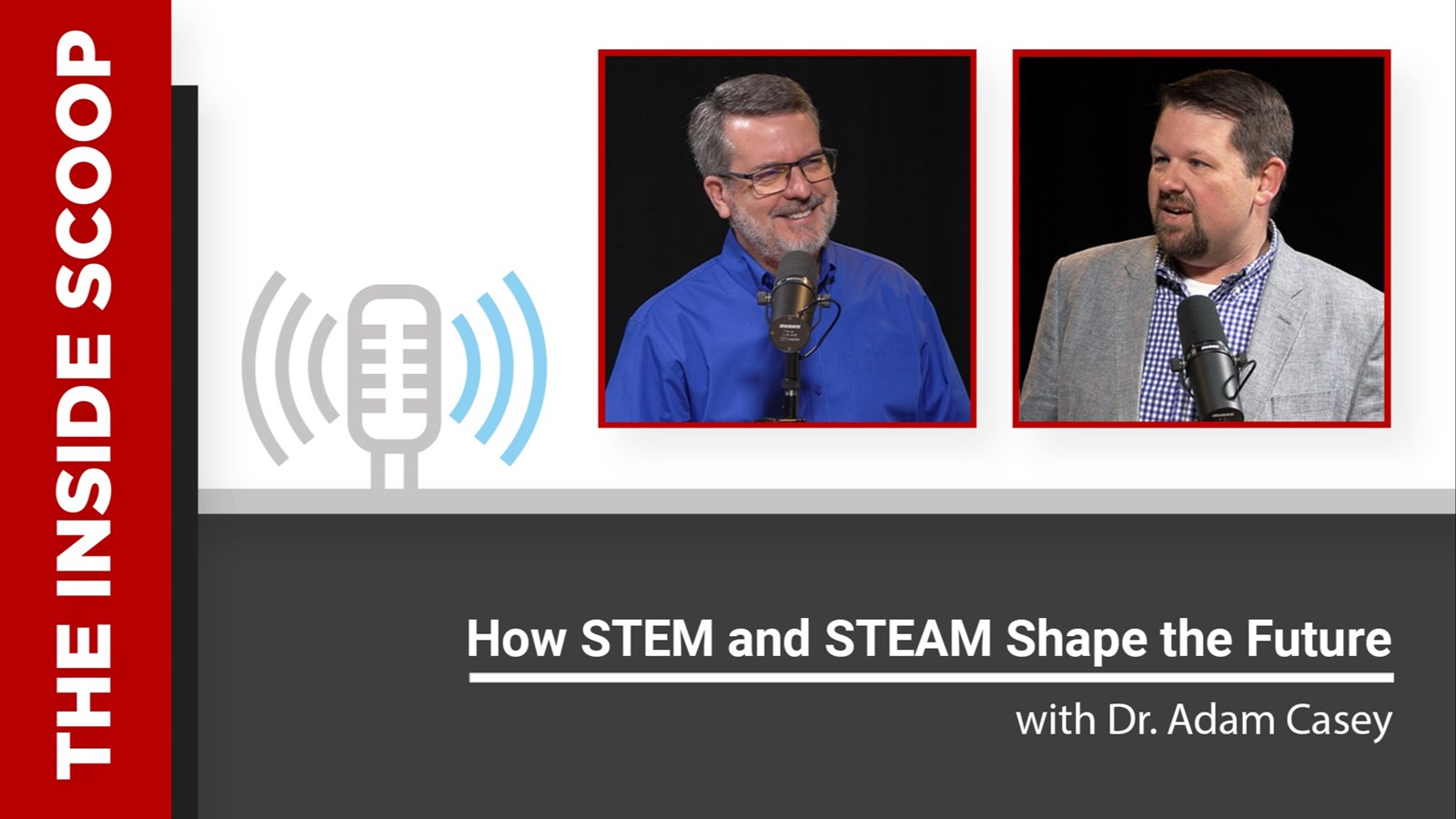The Inside Scoop: How STEM and STEAM Shape the Future

Most parents know the acronyms STEM (Science, Technology, Engineering, Mathematics) and STEAM (adding Arts) but aren't often aware that they are comprehensive instructional approaches rather than additional programs. They integrate subjects, moving away from traditional siloed teaching to foster real-world problem-solving and critical thinking among students.
Dr. Adam Casey is Cobb's Supervisor of STEM/STEAM and Innovation, and he joins the podcast today to discuss the role of STEM and STEAM and how they equip students with practical, interdisciplinary skills. He provides numerous examples of how STEM and STEAM are applied in schools at various grade levels. Younger students may address local problems, such as enhancing pollination on campus or determining the best site for a school garden. Older students tackle more complex challenges, like improving accessibility for wheelchair users. Students learn academic content, along with empathy, collaboration, and practical application. It enhances their readiness for future careers and fosters creativity and innovation.
The discussion also delves into how schools achieve STEM or STEAM certification, a process that typically takes one to two years and involves collaboration with community stakeholders. Certification signifies a commitment to interdisciplinary teaching and ongoing improvement. Dr. Casey notes the flexibility schools have in tailoring their approaches to align with their individual missions, with some establishing dedicated STEM labs to support hands-on learning.
Finally, Dr. Casey encourages local businesses to consider partnering with schools to provide real-world connections for students through field trips and collaboration. Parents can also participate through PTA involvement or by leveraging professional connections to enhance STEM and STEAM now and into the future.
